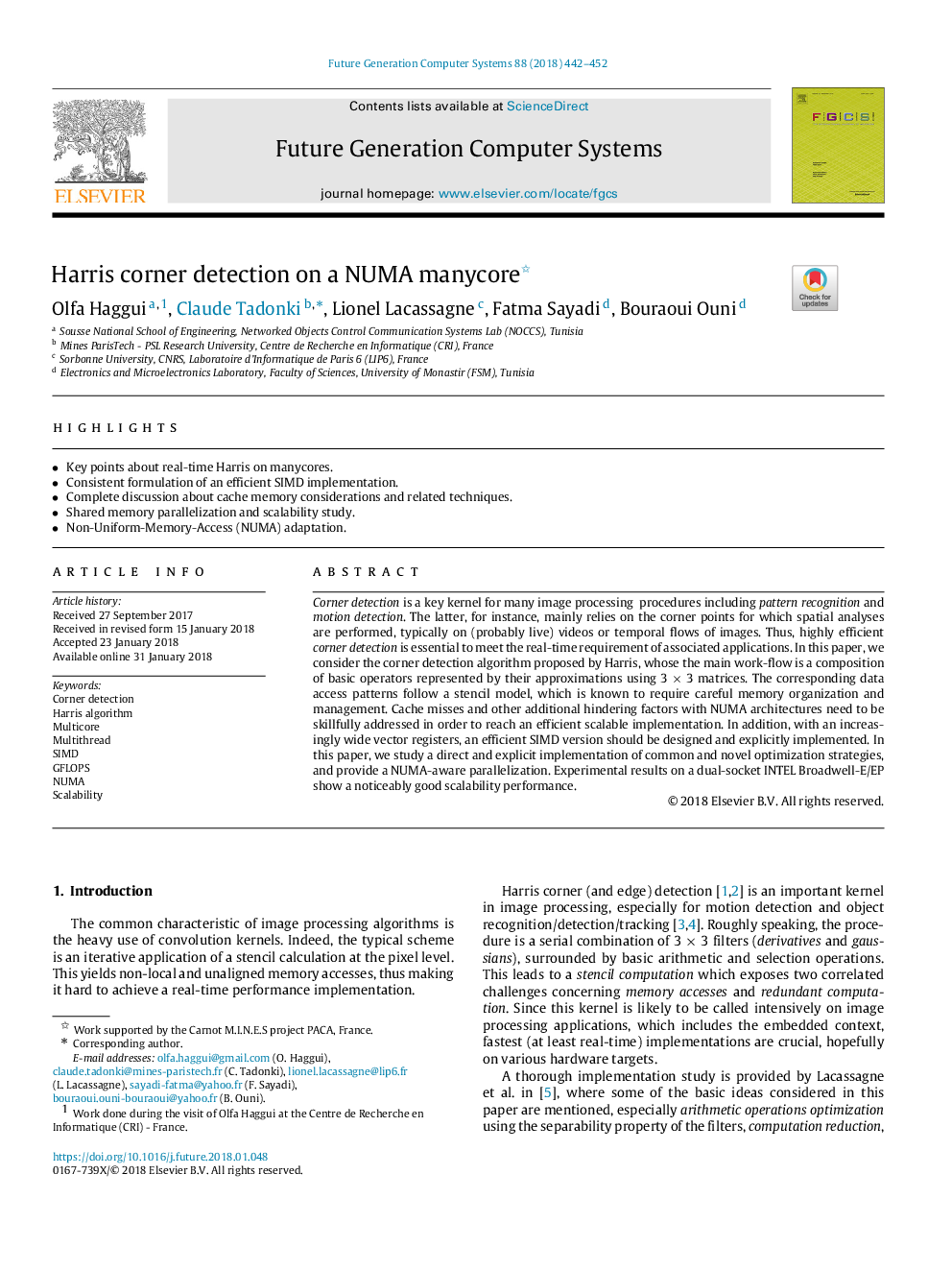| Article ID | Journal | Published Year | Pages | File Type |
|---|---|---|---|---|
| 6872884 | Future Generation Computer Systems | 2018 | 11 Pages |
Abstract
Corner detection is a key kernel for many image processing procedures including pattern recognition and motion detection. The latter, for instance, mainly relies on the corner points for which spatial analyses are performed, typically on (probably live) videos or temporal flows of images. Thus, highly efficient corner detection is essential to meet the real-time requirement of associated applications. In this paper, we consider the corner detection algorithm proposed by Harris, whose the main work-flow is a composition of basic operators represented by their approximations using 3Â ÃÂ 3 matrices. The corresponding data access patterns follow a stencil model, which is known to require careful memory organization and management. Cache misses and other additional hindering factors with NUMA architectures need to be skillfully addressed in order to reach an efficient scalable implementation. In addition, with an increasingly wide vector registers, an efficient SIMD version should be designed and explicitly implemented. In this paper, we study a direct and explicit implementation of common and novel optimization strategies, and provide a NUMA-aware parallelization. Experimental results on a dual-socket INTEL Broadwell-E/EP show a noticeably good scalability performance.
Related Topics
Physical Sciences and Engineering
Computer Science
Computational Theory and Mathematics
Authors
Olfa Haggui, Claude Tadonki, Lionel Lacassagne, Fatma Sayadi, Bouraoui Ouni,
